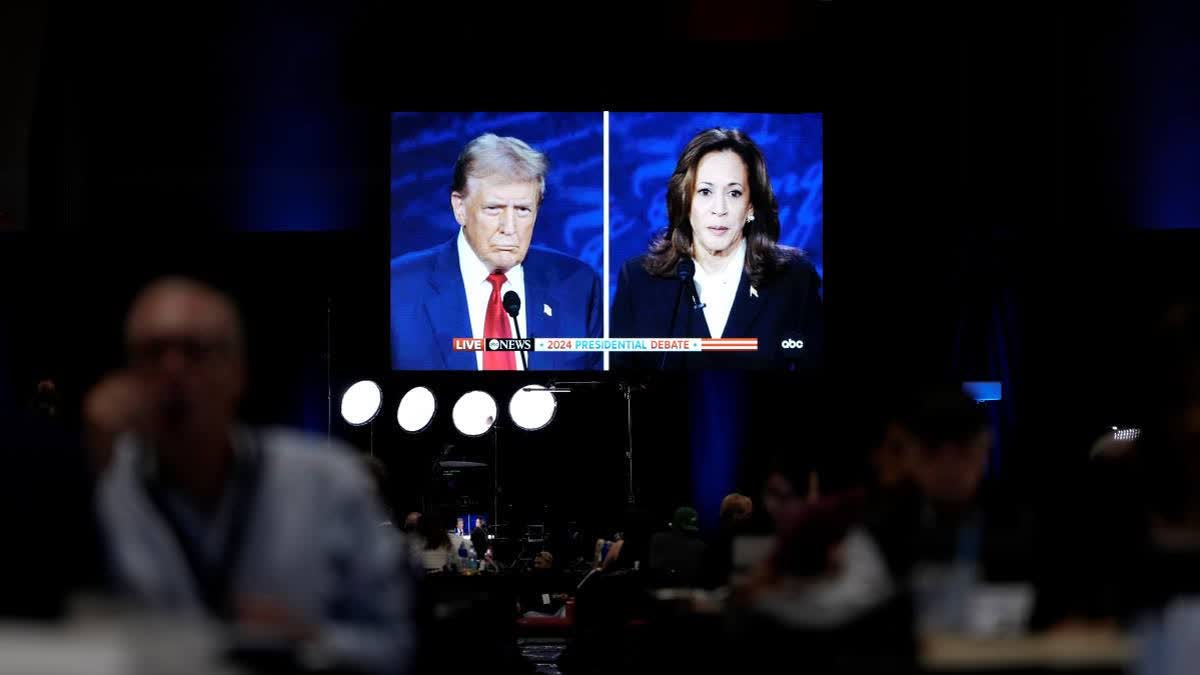United States: The US witnessed a special and charged presidential debate between Kamala Harris and Donald Trump on Wednesday. The event was unique in many ways. It was Harris's first faceoff with the former president in person and her first such event since she replaced President Joe Biden on the Democratic ticket. ETV Bharat takes you through some facts about US presidential debates and their history.
Presidential debates are an important feature in top elections in the US. The political faceoffs not only put the candidates to the litmus test but also help people become aware of potential leaders. The American tradition of such debates witnessed a major evolution in form and format. However, the tint of competition has stayed constant and continues to gain traction.
Beginning Of US Election Debates
In the US, the idea of political debates during elections started in 1858 during Illinois senatorial polls. Held between Abraham Lincoln and Stephen Douglas, the debate was a direct conversation without a moderator. During those days, the two leaders debated in public on seven occasions and argued on several issues, including moral, economic issues and slavery.
Such practice of debates continued for several decades in local polls, but after the advent of radio and television in 1948, things changed drastically as presidential debates debuted on the radio. The first broadcast debate was held by Republican primary contestants—Thomas Dewey and Harold Stassen—and was listened to by 40–80 million people on the radio.
Drastic Change In Political Faceoffs
The radio debates became a regular feature, and later such faceoffs started appearing on TV in 1952 when the League of Women Voters (LWV) hosted all potential presidential candidates on a show.
However, the major debate was televised in November 1956 between Democrat Eleanor Roosevelt and Republican Margaret Chase Smith. It was aired on CBS's Face the Nation, in which two women appeared on the show. Held just two days before the election, the debate focused primarily on foreign policy issues.
The major presidential debate in US history was held in September 1960, when John F. Kennedy and Richard Nixon came face-to-face and appeared on TV.
Although the unique occurrence became popular among people and gained a large viewership, it took another almost two decades for it to become a yearly feature.
Significant TV Presidential Debate Of 1980
In 1980, US President Jimmy Carter stayed away from the first general election debate. However, the debate happened between his two opponents—Republican nominee Ronald Reagan and independent candidate John Anderson. Carter had expressed reservations over Anderson's presence.
In the second debate, when Carter participated with his Republican opponent, Anderson stayed away. This event is significant in US presidential history as it triggered criticism for both leaders, probably for displaying "unhealthy" rivalry.
Evolution of Debates In US History
The US debate has seen a significant change over the years. The modern televised debates take their roots from the 1960 Kennedy-Nixon debates. And later saw a steep change in 1988 when George HW Bush and Michael Dukakis answered questions from journalists and moderators conducted the show. However, this format faced opposition from many people who termed it a "joint press conference."
In response, television channels and politicians experimented with various formats in the 1990s. And finally, the modern-day open hall debates with live audiences came into shape.
So far, the most-watched US presidential debate in history was between Hillary Clinton and Donald Trump, which was held in September 2016. According to Nielsen Media Research, at least 84 million Americans watched it.
The 1980 debate between President Carter and Reagan ranks second with 80.6 million Americans.
In the 2024 election, the first presidential debate, which featured Trump and Biden, again saw an unusual development because no live audience was present.
Read More:



